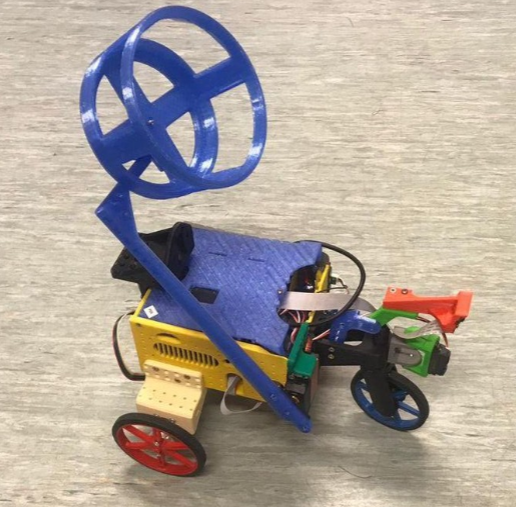How to develop an autonomous robot for varied tasks?
Developing an autonomous robot that can perform various tasks efficiently is a challenging but exciting endeavor. With advancements in technology, the possibilities for creating intelligent robots are endless. In this article, we will explore the steps involved in developing an autonomous robot for varied tasks.
1. Define the tasks
The first step in developing an autonomous robot is to clearly define the tasks it will be performing. Whether it’s navigating through a maze, picking up objects, or performing complex calculations, defining the tasks will help in designing the robot’s capabilities.
2. Choose the right hardware
Choosing the right hardware is crucial for the success of your autonomous robot. From sensors and actuators to processors and power sources, every component plays a vital role in the robot’s performance. Make sure to select high-quality components that are compatible with each other.
3. Develop the software
The software is the brain of the autonomous robot. Develop algorithms that will enable the robot to perceive its environment, make decisions, and execute tasks autonomously. Use programming languages such as C++, Python, or ROS to code the software for your robot.
4. Implement sensor fusion
Sensor fusion is the process of combining data from multiple sensors to obtain a more accurate and reliable understanding of the robot’s environment. Implement sensor fusion techniques to improve the robot’s perception and decision-making capabilities.
5. Test and iterate
Testing is an essential step in the development of an autonomous robot. Conduct rigorous testing to evaluate the robot’s performance in various scenarios. Collect data, analyze results, and iterate on the design to improve the robot’s capabilities.
6. Optimize for efficiency
To develop an autonomous robot that can perform varied tasks efficiently, optimize the robot’s algorithms and hardware for speed, accuracy, and energy efficiency. Fine-tune the robot’s performance to ensure it can complete tasks quickly and effectively.
7. Scale up
Once you have successfully developed an autonomous robot for varied tasks, consider scaling up its capabilities. Add new features, expand its functionality, and integrate it into larger systems to tackle more complex tasks. Continuously evolve your autonomous robot to keep up with the latest advancements in robotics technology.
Conclusion
Developing an autonomous robot for varied tasks requires careful planning, innovative thinking, and perseverance. By following these steps and constantly refining your robot’s capabilities, you can create a versatile and efficient autonomous robot that is capable of performing a wide range of tasks with precision and accuracy.
How to develop an autonomous robot for varied tasks?
Developing an autonomous robot that can perform various tasks efficiently is a challenging but exciting endeavor. With advancements in technology, the possibilities for creating intelligent robots are endless. In this article, we will explore the steps involved in developing an autonomous robot for varied tasks.
1. Define the tasks
The first step in developing an autonomous robot is to clearly define the tasks it will be performing. Whether it’s navigating through a maze, picking up objects, or performing complex calculations, defining the tasks will help in designing the robot’s capabilities.
2. Choose the right hardware
Choosing the right hardware is crucial for the success of your autonomous robot. From sensors and actuators to processors and power sources, every component plays a vital role in the robot’s performance. Make sure to select high-quality components that are compatible with each other.
3. Develop the software
The software is the brain of the autonomous robot. Develop algorithms that will enable the robot to perceive its environment, make decisions, and execute tasks autonomously. Use programming languages such as C++, Python, or ROS to code the software for your robot.
4. Implement sensor fusion
Sensor fusion is the process of combining data from multiple sensors to obtain a more accurate and reliable understanding of the robot’s environment. Implement sensor fusion techniques to improve the robot’s perception and decision-making capabilities.
5. Test and iterate
Testing is an essential step in the development of an autonomous robot. Conduct rigorous testing to evaluate the robot’s performance in various scenarios. Collect data, analyze results, and iterate on the design to improve the robot’s capabilities.
6. Optimize for efficiency
To develop an autonomous robot that can perform varied tasks efficiently, optimize the robot’s algorithms and hardware for speed, accuracy, and energy efficiency. Fine-tune the robot’s performance to ensure it can complete tasks quickly and effectively.
7. Scale up
Once you have successfully developed an autonomous robot for varied tasks, consider scaling up its capabilities. Add new features, expand its functionality, and integrate it into larger systems to tackle more complex tasks. Continuously evolve your autonomous robot to keep up with the latest advancements in robotics technology.
Conclusion
Developing an autonomous robot for varied tasks requires careful planning, innovative thinking, and perseverance. By following these steps and constantly refining your robot’s capabilities, you can create a versatile and efficient autonomous robot that is capable of performing a wide range of tasks with precision and accuracy.



